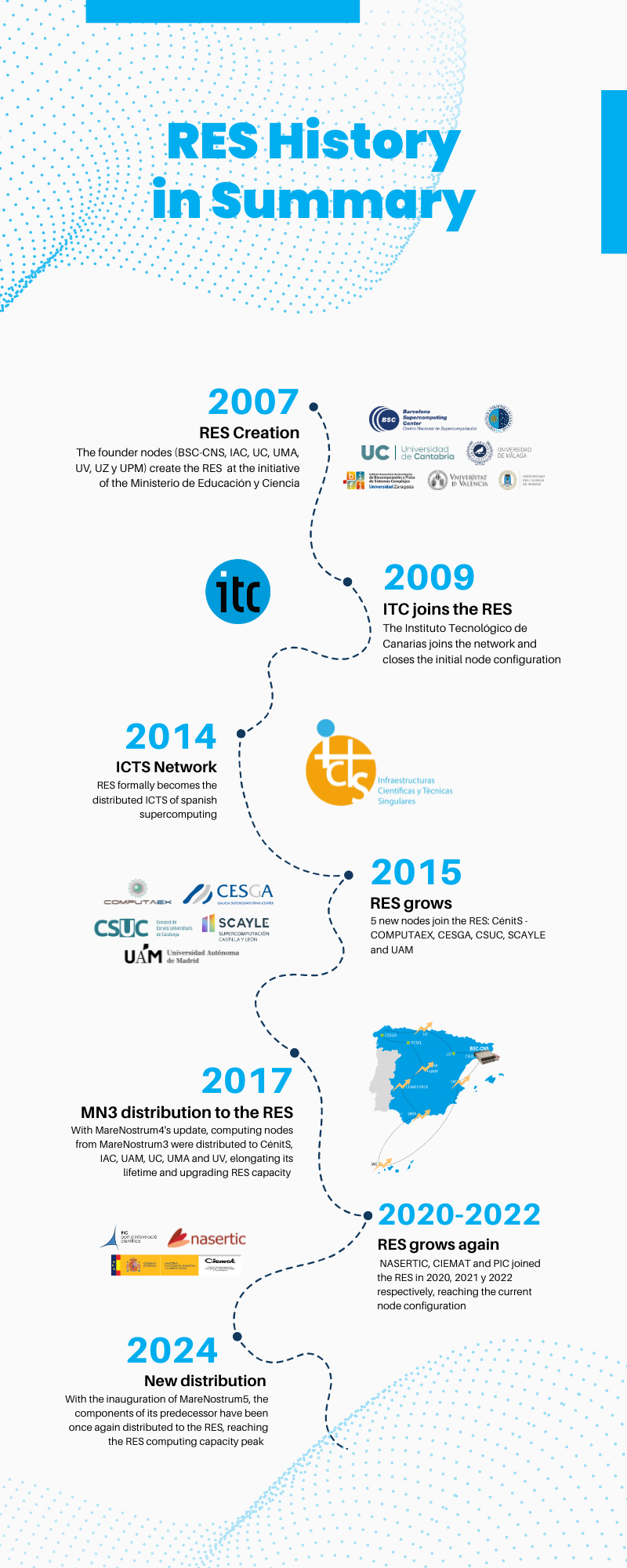The Spanish Supercomputing Network (ICTS) was created in March 2007 by the Ministry of Education and Science, in response to the need to increase the computing capacity available to the Spanish scientific community.
At the beginning, the power of the first edition of the MareNostrum supercomputer was doubled, distributing the components from 2004 to the founding institutions of the RES: Barcelona Supercomputing Center - National Supercomputing Center (BSC-CNS), Instituto de Astrofísica de Canarias (IAC), University of Cantabria (UC), University of Málaga (SCBI-UMA), University of Valencia (UV), University of Zaragoza (BIFI-UZ), and Polytechnic University of Madrid (UPM). The Canary Islands Institute of Technology (ITC) joined these entities in 2009, completing the initial composition of 8 nodes of the RES.
In 2014, the RES formally became the distributed ICTS of Spanish supercomputing, becoming part of the national map of Singular Scientific and Technical Infrastructures (ICTS), as an exceptional scientific installation in its field, publicly owned and available through open and competitive access.
In March 2015, the nodes CénitS — COMPUTAEX, Galicia Supercomputing Center (CESGA), Consorci de Serveis Universitaris de Catalunya (CSUC), Supercomputing Castilla y León (SCAYLE), and Autonomous University of Madrid (UAM) joined the RES.
In 2017, with the upgrade from MareNostrum3 to MareNostrum4, the distribution of components in the network continued similarly to how it was done in 2007. Through these distribution cycles, the RES achieves the dual objective of extending the useful life of the state's major investments in supercomputing and expanding the computational capacity of the network at low cost to serve the national scientific community.
More recently, in the years 2020, 2021, and 2022, Navarra de Servicios y Tecnologías (NASERTIC), the Center for Energy, Environmental and Technological Research (CIEMAT), and the Port d'Informació Científica (PIC) were incorporated, reaching the current total of 14 institutions, 16 supercomputers, and 9 data service centers.
Finally, during the course of 2024, the distribution of components to the network has continued, following the inauguration of the MareNostrum5 computer.





